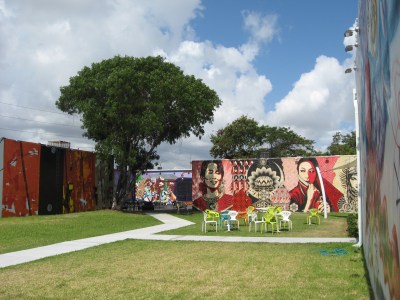For civic leaders facing limited resources, arts and cultural initiatives have become an appealing community-development strategy. In recent years, the fine-grained arts district — one that does not reinvent a neighborhood wholesale but enhances the existing community with diverse new development — has burgeoned. In fact, some cities are developing more than one of these districts at the same time. This may be due in part to the dramatic downturn in national and local economies, which has made funds for larger capital projects scarce. But there’s another reason why these arts districts are so popular: They have the potential to deliver many types of benefits, for both the public and private sectors, at a time when other tools for community development are flagging. Arts districts are complex entities that develop over long periods of time, usually decades, with multiple organizations and individuals contributing to a district’s character and success. Initiatives in Miami, Cleveland, Seattle, Queens, N.Y., and Columbus, Ohio, are as diverse as the cities themselves. A few key strategies, however, may prove successful in many locales. Here are some of the most promising approaches taking root in American cities today.
A mural by Shepard Fairey at Wynwood Walls in Miami. Photo by Javier Zaya-Bazan, Boom or Bust: Miami
Seattle, Miami, Cleveland: Sharing resources fosters community
Multi-tenant projects bring different organizations together in shared facilities, usually constructed and financed by one developer organization. These projects take the burden of raising capital off of small arts organizations and reduce long-term costs to maintain the facility. As a communitydevelopment strategy, these kinds of buildings can create a vibrant sense of place, provide a venue for diverse arts and other innovative events, and offer educational and social programs that engage local residents. The Youngstown Cultural Arts Center in Seattle, for example, provides low-income housing for artists who in turn support the arts, education and social-development work of the center. In Cleveland, the Gordon Square Arts District ran a single capital campaign for three separate theater projects at three separate non-profits. It’s rare for organizations to share donors and connections, but it worked because none of the three could have raised the necessary capital on their own. By collaborating, they could operate on a grander scale and make the project about revitalizing the district as well as supporting the arts. Housing for artists and those who work in the arts can help catalyze a vibrant arts district. In Miami, the new “form-based” planning code Miami 21 (which focuses on the physical form of buildings, rather than on how the space is used) encourages housing for “cultural workers” by allowing live/work space without requiring special approvals. Miami is also considering new types of housing with shared common living and work areas.
Cleveland and Queens : Meeting social needs creates new audiences
Arts organizations can boost their staying power when they expand their social contribution beyond traditional educational programs. In the Gordon Square Arts District, the Cleveland Public Theatre provides arts education for children who live in public housing, job training for at-risk youth and homeless men in recovery, and a writing and speaking program for women recovering from domestic violence — all while maintaining a demanding program of nationally recognized experimental theater. In Queens, N.Y., the Queens Museum of Art has initiated arts and literacy programs and health fairs, sponsored community dialogues on current events, and helped revitalize Corona Park, the community’s center. These organizations are not only serving the needs of their community but also building new audiences for the arts.
Miami and Columbus: “Going big” builds a brand
The most successful districts add experimental temporary programming to their permanent projects. Many districts organize “art in storefronts” programs, art fairs, gallery walks and mural projects. But when these events expand beyond expectations, they can be catalytic — reaching new audiences, driving regional tourism and creating a brand identity for the district. In the Wynwood neighborhood of Miami, the Wynwood Walls project — a series of massive murals by 18 international artists — has created a “town center” for the district as well as a recognizable brand. Technology and social networking can also weave arts, cultural or historical threads through a neighborhood in unexpected ways. In the Short North District of Columbus, Ohio, the Department of Public Health’s Healthy Places initiative uses a telephone application and a podcast art walk to connect people to the arts while encouraging exercise. It’s become so popular that the city has expanded the program to other districts. While these initiatives are each products of their own distinct cultures, many might be altered, scaled up or twisted to meet the unique creative spirit of San Francisco and its arts community.

